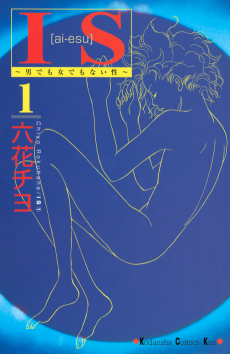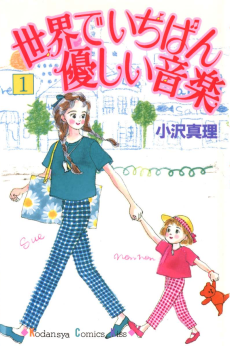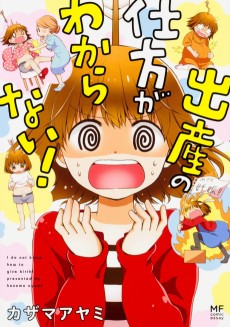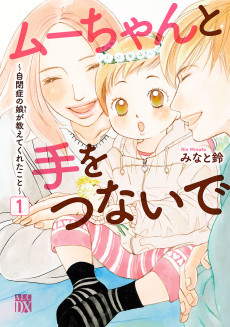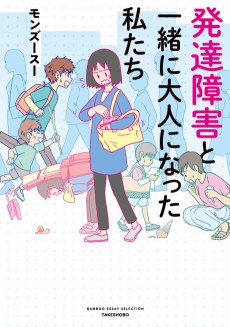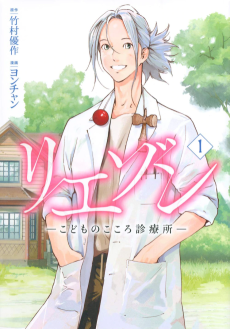HIKARI TO TOMO NI...
STATUS
COMPLETE
VOLUMES
15
RELEASE
April 3, 2009
CHAPTERS
93
DESCRIPTION
Born during the sunrise—an auspicious beginning—the Azumas' newborn son is named Hikaru, which means "light." But during one play date, his mother notices that her son is slightly different from the other children. In this alternately heartwarming and bittersweet tale, a young mother tries to cope with both the overwhelming discovery of her child's autism and the trials of raising him while keeping her family together. This is a story that resonates not only for those whose families have been affected by autism, but also for all past, present, and future parents.
(Source: Yen Press)
Notes:
- The chapter count includes the one-shot "Thank You Sensei!, Haru no Manazashi".
- The English publishing of this manga only has 8 volumes, compared to the usual 15 in Japan.
CAST
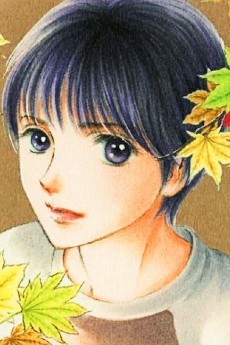
Hikaru Azuma
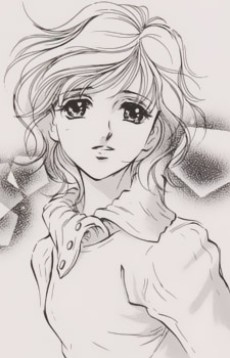
Sachiko Azuma
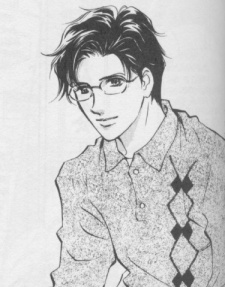
Masato Azuma

Kanon Azuma

Shigeru Aoki

Moe Nakajima

Hisako Nakajima

Takuya Oki

Noriko Wakabayashi

Takako Azuma

Miyu Honda

Daisuke Ishida
CHAPTERS
RELATED TO HIKARI TO TOMO NI...
REVIEWS

ZechAni
75/100The only series that explores autism. An endearing story you should read.Continue on AniListAs an anime-only watcher—who has recently started following manga lately—I have been capable of utilizing my time searching for something to read. However, whenever we stumble upon a manga that approaches a controversial topic, our interest is piqued. I decided to check if there were other indistinguishable series. There are no results. That would mean autism as a theme, in general, is uncovered by manga of any demographic. This occurrence causes me to beg the question, “Why isn’t there more series that tackle autism?”
Awareness is significant—it implements change to influence ourselves and others around us.
Autism has been beginning to be more prevalent since the aughts, but now, we are furnished with present-day information. Which offers more comfort as families face current challenges. Set in the 80s, everywhere to witness, parents of children are flooded with judgment—all of which is appalling. Schools have trouble providing appropriate services to a diverse and increasingly numerous student population diagnosed with ASD. This is where I present you to undoubtedly one of the better-underrated manga, With the Light: Raising an Autistic Child – a glamorous character-driven series that explores the spectrum with organic interactions.
With the Light by force is a rare breed in the manga industry. It solemnly involves a controversial topic and centers not just on the person with autism, but rather depicts the personal difficulties of parenting along with them. With the Light provides an imaginative exploration of how the Japanese perceive and take care of those who are on the autistic spectrum. In America, they have acquired a better insight into ASD and provided aid to them, despite the issues that need to be addressed. The situation in Japan is dire, especially since the Japanese draw from a further traditional background, comprising a collective society and being conservative regarding delicate topics. Japan’s treatment of those with autism is appalling compared to North America, primarily since the general awareness of mental health is low from firm traditional values. To elaborate, start by recognizing the relative performance of such measures in diverse cultures. While the issue seems universal, there are subtle differences in their expressions and personal traits. We possess little knowledge involving families of children with autism from cultural perspectives. It allows the audience to identify the elements influencing parenting stress among parents of autistic children in Japan. That is what rightly makes With the Light remarkable compared to other series.
Love can be different for each person—the way everyone perceives affection depends on how they desire it to be. However, that is only in the process of attaining love if you truly yearn for it.
Denial, anger, depression, and acceptance. With the Light follows the story of Sachiko, a diligent mother who gave birth to her son, Hikaru. She expresses a deep ambition to tend to her beloved child and fantasizes about an ideal family to fulfill her expectations, as there was research regarding raising a baby. However, those expectations did not come to light. Learning what autism is, Sachiko begins to be in disbelief about Hikaru’s disability. Denial. She got detached from most of her dearest ones, such as her fiancé, Misato. A workaholic husband who doesn’t retain a firm grasp of fatherhood. The blame and their vexation proceeds to Hikaru. Anger. Venting in her cognitive dissonance—the sheer complication any mother could have with their child — not expressing their affection. Depression. Fortunately, as Sachiko was sobbing, it seemed Hikaru could finally reciprocate her love and enlighten her with inflorescences. It encapsulated her ambitions, now willing to accept the responsibility to teach herself valuable skills so that someday she may experience the life of an excellent mother. Acceptance.
A few readers will encounter problems with how the emotional buildup paces too fast with the evocative narrative in the beginning. Considering the subject matter, this series walks on a path by focusing on a family that happens to give birth to an autistic son. The notable aspect of the writing in With the Light comes from its concept of ASD and how it is integrated into the narrative. Timing and concentration are taken into consideration to allow these small yet significant and alluring moments to sustain an appropriate buildup to genuinely possess a resonating effect. The reason I mentioned this issue is because there are stories that handle drama as a way to toy with the audience’s emotions. While there are hints of melodrama, it still establishes significant scenes that showcase the development of Hikaru and his family. A crucial issue would furthermore, be that the ending does not include a "proper" conclusion, which makes it vague for the audience to grasp. What do I mean by a "proper" conclusion? Unfortunately, the mangaka passed away before she could complete the series.
As time continues, their relationship grows potent; these characters are deeply flawed but made realistic because of that. They were self-centered and condescending. Yet also stressed, broken, and simply yearning for an “ordinary” family. Initially, you may find a dislike for Sachiko and Misato since they were absent-minded with themselves. Ultimately, you will witness them blossom as parents. The side and supporting characters are enthusiastic, maintaining their morale high despite the hardships they face. To illustrate, they also devote time to explore issues within ASD that affect friends and acquaintances known to Hikaru and his family. Which includes abuse, child discipline, etc.
When looking at the supporting cast, it is not merely Hikaru’s family finding themselves in handling these issues. The characters display a broad variety of emotions such as anger, fear, embarrassment, and indifference. All of which are conveyed well to the reader. Everything is directly passed on to the audience candidly and naturally. However, the issue is we merely receive a narrow portion of their lives, which was ordinarily never intended for such a miniature audience. This is vital if we consider the importance of education in its narrative. With the Light already mentions that autism is different for everybody however, they need to emphasize it a bit more. School is imagined as an integral part of the community's culture and one's development. It enhances a pivotal environment in Hikaru’s growth as an adolescent boy. A fostering place of learning, it is there where our mind flourishes intellectually—then later perceives introspection.
The artwork is your retro-shoujo manga, but the drawing still captures the characters’ expressive gestures and movements. Nothing feels underused, but at the same time, nothing happens to be too brash. The visuals match the wholesome vibe, but simultaneously, it is nostalgic. Furthermore, there will not be any extraordinary characteristic details that seize your earnest attention, which is unfortunate considering the personal setting. It is crucial to pay attention to minor details when you try to evince signs of autism to the intended audience.
If you are dissecting this series as an academic resource or gaining a comprehensive grasp of autism, restrict your expectations from being excessively high. Despite the lavish praise I gave, With the Light does not perfectly provide a deep exploration of ASD or portray all of its issues along with it. We will not see different therapy methods, such as Hikaru's thought process, trauma, or coping mechanisms. Proper terminology can be outdated. The audience will gain a more thorough understanding. If you want to inform yourself even further, I suggest researching to obtain extensive knowledge and talking to them about their lives for anecdotes. Why? Attentively, experts in the manga encourage our characters to refer to an autistic child in the same way you would to a foreigner, using simple words and bold gestures. For instance, when foreign characters were introduced, they spoke in broken Japanese, similar to autistic people.
All things considered, you should appreciate this manga as a profound story. It is one of the most underrated manga I wholeheartedly adore for everything the series attempts to bring. From the tact it brought to the topic for the audience, to the relatability for people living with ASD. In conclusion, if you are autistic, chances are you will resonate with this series. The same applies to those who happen to recognize someone on the spectrum as well.
Rest in Peace, Keiko Tobe. (1957-2010)
Thank you kindly for reading my first review.
SIMILAR MANGAS YOU MAY LIKE
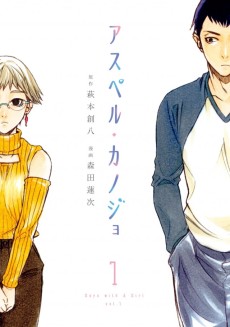 MANGA DramaAsper Kanojo
MANGA DramaAsper Kanojo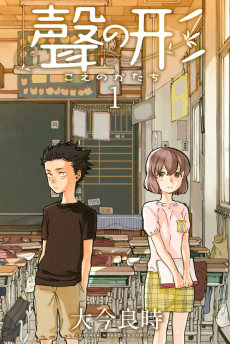 MANGA DramaKoe no Katachi
MANGA DramaKoe no Katachi
SCORE
- (3.85/5)
MORE INFO
Ended inApril 3, 2009
Favorited by 77 Users


